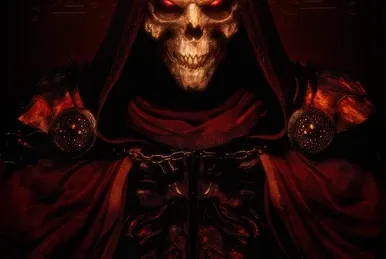In the dark and chaotic world of Diablo, the lore is filled with powerful characters, tragic figures, and epic battles. One such character is Khalim, the revered leader of the Zakarum faith. His story is one of sacrifice, betrayal, and corruption. But how did Khalim die? In this article, we’ll explore the background of Khalim, his role in the Zakarum, the evil that overtook him, and the heroic efforts to preserve his legacy in the fight against darkness.
Who Was Khalim?
Before we dive into how Khalim died, it’s important to understand who Khalim was and why his death was such a significant event in the Diablo universe. Khalim was the revered and influential High Priest of the Zakarum, a religious order dedicated to the worship of the Light and the Archangel of Justice, Tyrael. As the leader of this sacred order, Khalim was regarded as a paragon of virtue, wisdom, and justice. He sought to spread the teachings of the Light and promote peace across the lands.
However, as often happens in the Diablo series, even the greatest leaders are not immune to the forces of evil. The Zakarum faith, which had long served as a guiding light for many, was gradually infiltrated and corrupted by the Prime Evils, the demonic overlords who sought to bend Sanctuary to their will. Khalim, as the High Priest, found himself in the crosshairs of one of these Prime Evils—Mephisto, the Lord of Hatred.
Mephisto’s Corruption of the Zakarum
Khalim’s downfall began when Mephisto, the eldest of the three Prime Evils, was trapped within a soulstone and imprisoned in the city of Travincal in the heart of Kurast. However, even in his weakened state, Mephisto’s power and influence were too great to be fully contained. Over time, his corruption seeped into the minds of the Zakarum priests, poisoning the very faith they had once sworn to uphold.
The Grand Council of Zakarum, including the highest-ranking priests and leaders of the order, slowly fell under Mephisto’s sway. Khalim, however, resisted. His faith in the Light and his commitment to protecting his people allowed him to resist Mephisto’s corrupting influence longer than any of his fellow priests. Yet, Mephisto’s reach was vast, and his power insidious. While Khalim remained true to his principles, he could not escape the storm that was building around him.
How Did Khalim Die?
So, how did Khalim die? Khalim’s death came at the hands of his fellow Zakarum priests, who had succumbed to Mephisto’s control. As the corruption spread through the Council, the once-noble order of Zakarum turned against Khalim, who was seen as an obstacle to Mephisto’s plans. They could not allow Khalim, the one man capable of rallying resistance to their dark master, to continue his defiance.
The corrupted Council members, acting under Mephisto’s influence, betrayed Khalim and attacked him. Despite his strength and faith, Khalim was overpowered. However, rather than simply killing him outright, Mephisto and the Council chose a more insidious form of punishment—they dismembered Khalim, shattering his body into several pieces and scattering them throughout the land of Kurast. This gruesome act ensured that Khalim could not be resurrected or restored to power by those who would oppose the Prime Evils.
Khalim’s death was not just a physical one; it represented the fall of the Zakarum order and the completion of Mephisto’s corruption of the faith. Without Khalim to lead the resistance, the Zakarum became fully enslaved to Mephisto’s will, transforming from a force of good into a cult that served the Lord of Hatred.
The Quest for Khalim’s Relics
Though Khalim was dead, his influence on the world of Sanctuary did not end with his dismemberment. In Diablo II, players are tasked with a quest that revolves around gathering Khalim’s relics—his heart, brain, eye, and flail—to stop Mephisto’s corruption. These relics were scattered throughout the jungles and temples of Kurast, hidden away by the corrupted Zakarum priests.
The quest to gather Khalim’s relics is a crucial part of the game’s Act III, as players must use these pieces to reconstruct Khalim’s Will, a powerful artifact that can destroy the Compelling Orb. This Orb is a magical device that binds the will of the Zakarum priests to Mephisto, and without destroying it, the player cannot hope to enter the Durance of Hate, Mephisto’s lair.
In essence, Khalim’s death and the scattering of his body became the catalyst for the player’s quest to defeat Mephisto. By gathering Khalim’s relics and reforging his flail, players can strike back against the evil that corrupted the Zakarum and take a significant step toward defeating the Prime Evils.
The Symbolism of Khalim’s Death
Khalim’s death holds significant symbolism within the Diablo universe. It represents the corrupting influence of evil and the dangers that even the most righteous figures face in the battle against the Prime Evils. Khalim, once the proud leader of a holy order, was brought low not by external enemies but by those he trusted most—his own people.
However, Khalim’s legacy also stands as a testament to resilience and faith. Even in death, Khalim’s will remains strong, and his relics become the key to undoing the corruption that overtook his beloved Zakarum. The quest to recover Khalim’s body parts and reassemble his flail symbolizes the restoration of faith and the triumph of good over evil.
Fans’ Reactions: A Tragic Hero
Khalim’s story resonates with fans of Diablo II as one of the darker and more tragic tales in the game’s lore. His brutal death, the betrayal by his own people, and the task of reassembling his relics create a poignant narrative about sacrifice, faith, and the cost of resisting evil.
Though Khalim himself never physically appears in the game, his presence is felt throughout Act III, and his story serves as a motivating force for players as they seek to defeat Mephisto and restore peace to Kurast.
Conclusion: How Did Khalim Die?
So, how did Khalim die? Khalim was betrayed by the Zakarum Council, who had fallen under the control of Mephisto, the Lord of Hatred. He was brutally dismembered, and his body parts were scattered across Kurast to prevent his resurrection. However, Khalim’s legacy lived on through the quest to recover his relics and reassemble his flail, which ultimately helped the heroes of Diablo II strike back against the forces of darkness. Khalim’s death, though tragic, became a symbol of resilience in the face of overwhelming evil.

















